- What is Relationship Abuse?
- Statistics Surrounding Relationship Abuse
- Forms of Abuse
- How does abuse impact a person?
- What are the long lasting effects of relationship abuse?
- Why do people stay in violent relationships?
- Helping Someone in an Unhealthy Relationship
- Myths Involving Relationship Abuse
- Why do cases of male abuse go unreported?
- Reference List
What is Relationship Abuse?
- Relationship abuse can be defined as actions that consist of physical, emotional or sexual abuse that are forced onto another person that you are in a relationship with.
- This type of abuse comes with a considerable degree of social stigma attached to it resulting in a lot of cases going unreported.
- It impacts both men and women though is commonly associated with women.
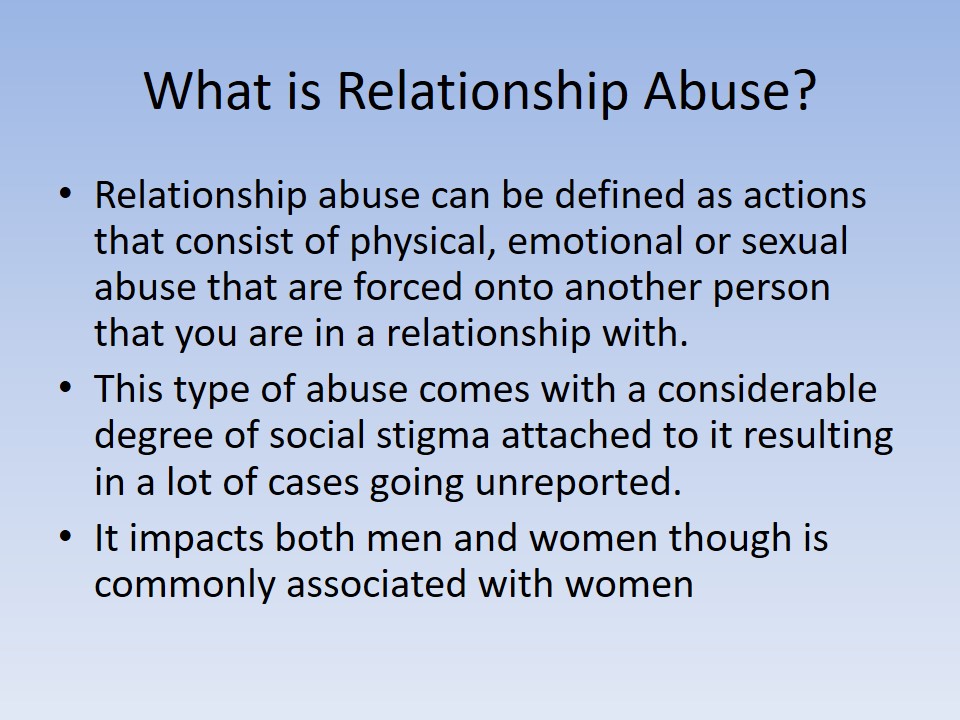
Statistics Surrounding Relationship Abuse
- Based on current statistics:
- 1.5 million high school students within the U.S. on average are subjected to some form of relationship abuse.
- Nearly a quarter of all high school girls within the U.S. have been victims of relationship abuse.
- 70% of present day college students within the U.S. have been sexually coerced in some way.

Forms of Abuse
- Physical Abuse – intentional use of physical force on a person with the intent of hurting them in some way.
- Emotional Abuse – is a type of non-physical abuse that manifests in actions such as insulting, threatening or intimidating the person you are in a relationship with.
- Sexual Abuse – this act involves forcing an undesired type of sexual act onto the person (ex: sex without a condom, overly aggressive sexual pressure, etc.) (Clark, Reiland, Thorne & Cropsey, 2014).

How does abuse impact a person?
- Loss of confidence – this comes in the form of a person thinking of themselves in a negative fashion.
- Suicidal tendencies – people in abusive relationships have been known to commit suicide to escape abuse.
- Physical pain – this is the result of physical abuse and manifests through the various aches and pains on a person’s body from physical trauma.

What are the long lasting effects of relationship abuse?
- Creates a greater risk for self-abuse in the form of taking illegal substances, overeating and other forms of adverse behavior.
- Can manifest in aberrant psychological behavior wherein someone that is abused may try to abuse their future partner.
- For sexual abuse victims, it increases the potential for them to contract an STD (ex: abuse by refusing to use a condom) (Stevens, 2014).
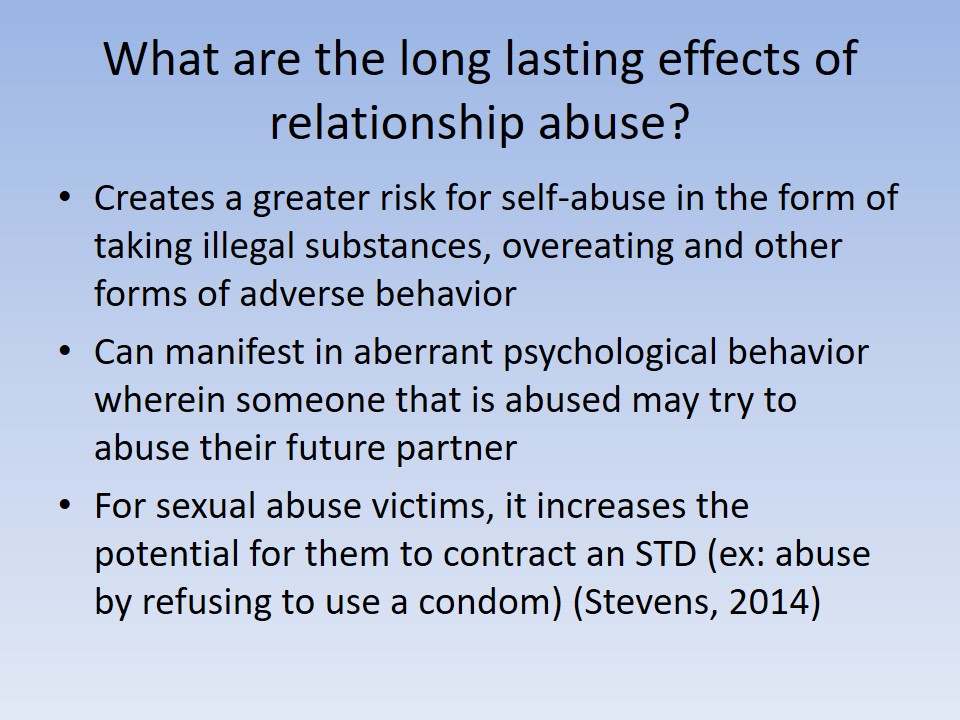
Why do people stay in violent relationships?
- Fear – this is based on their belief that their partner may do something excessively violent to them if they leave.
- Low self-esteem – a person with this trait may actually believe that the abuse they get is their fault.
- Cultural/Religious Reasons – the traditional gender roles within a region may prevent a person from speaking out against the abuse they receive resulting in them staying in the relationship (Fox, Corr, Gadd, & Butler, 2014).
- Reliance – a person may be financially reliant on their abuser.
- Peer pressure – a person may be reluctant to end the relationship due to how it may be perceived by others.
- The belief that the abuse is a normal facet of a relationship.
- Love – while this last trait is rare, there are people that remain in a relation due to the belief that their partner may change for the better.
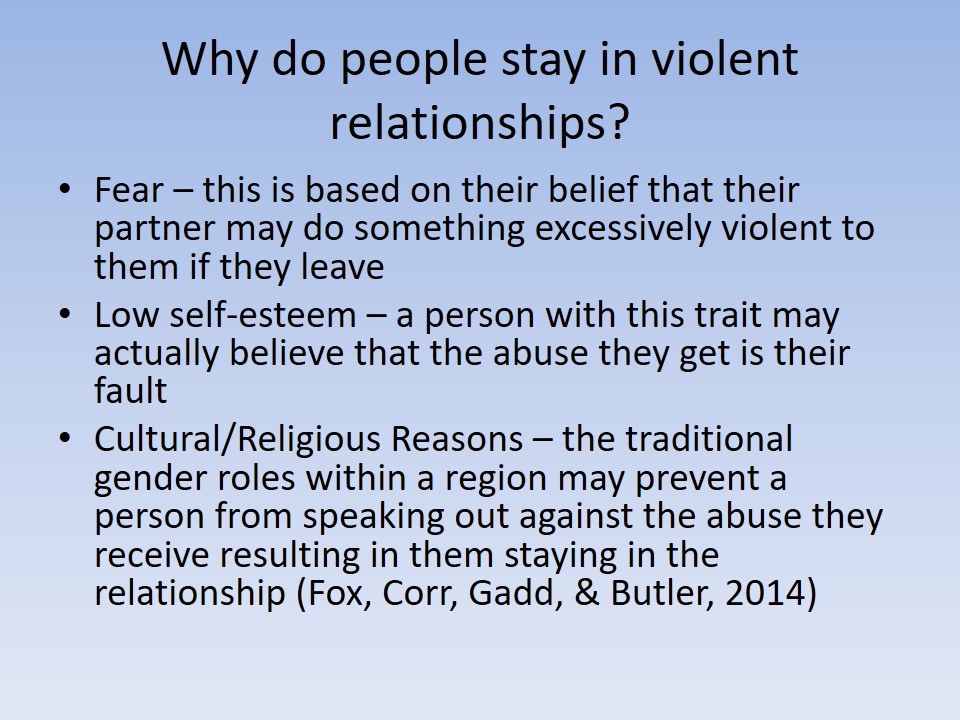

Helping Someone in an Unhealthy Relationship
- Noticing the signs of abuse – in order to help someone you have to notice the signs of abuse (i.e. physical marks or unusual behavior). (Salwen, Hymowitz, Vivian & O’Leary, 2014).
- Inform them that they have a safe place to go to.
- Inform the proper authorities to prevent the abuse from escalating.
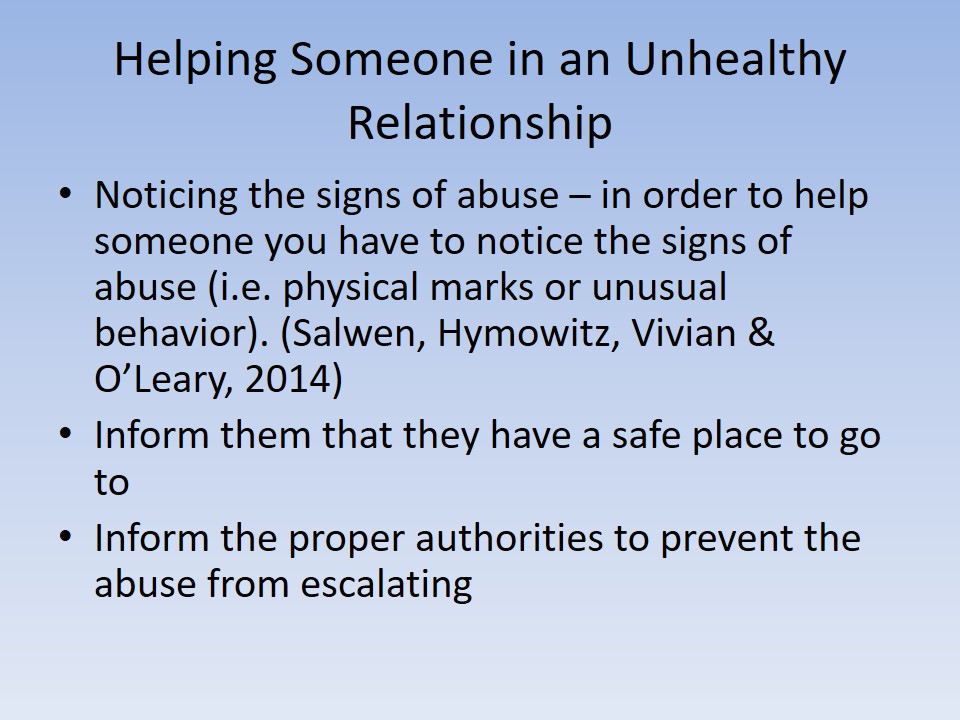
Myths Involving Relationship Abuse
- Myth: Only women are subjected to relationship abuse. (FALSE).
- One out of every 10 men within the U.S. has been subjected to some form of relationship abuse.
- 13% of victim callers to the National Domestic Abuse Hotline are men.
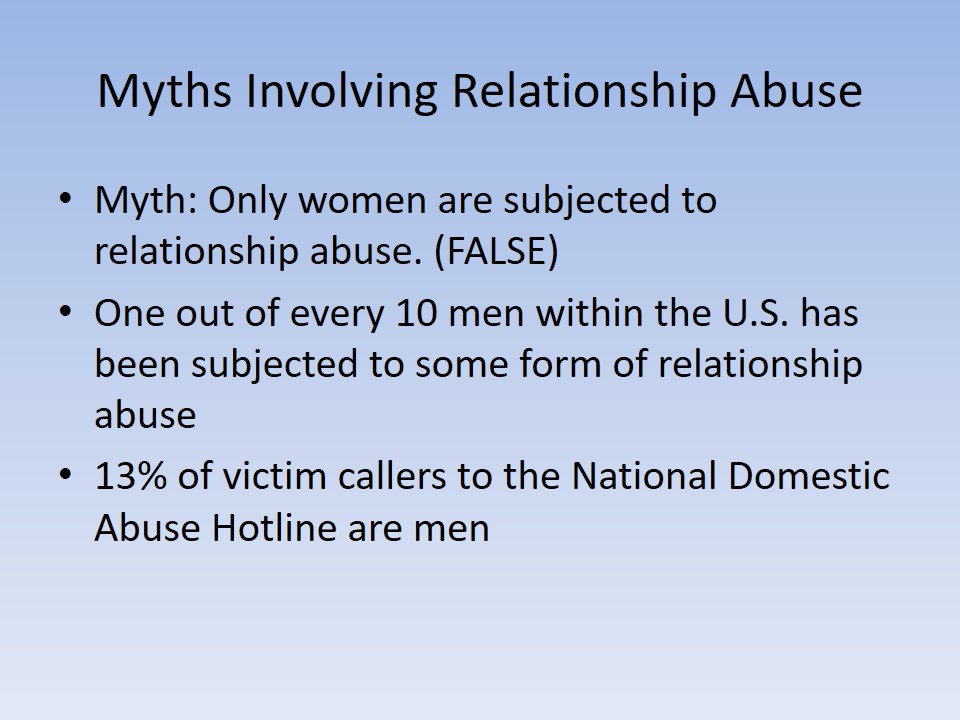
Why do cases of male abuse go unreported?
- There is a stereotype that only men are the abusers in a relationship.
- There is a social stigma of men portraying themselves as being “the weaker sex” in a relationship.
- Reported cases of relationship abuse by men is often thought of as a “joke” or is not taken seriously (Halpern-Meekin, Manning, Giordano, & Longmore, 2013).
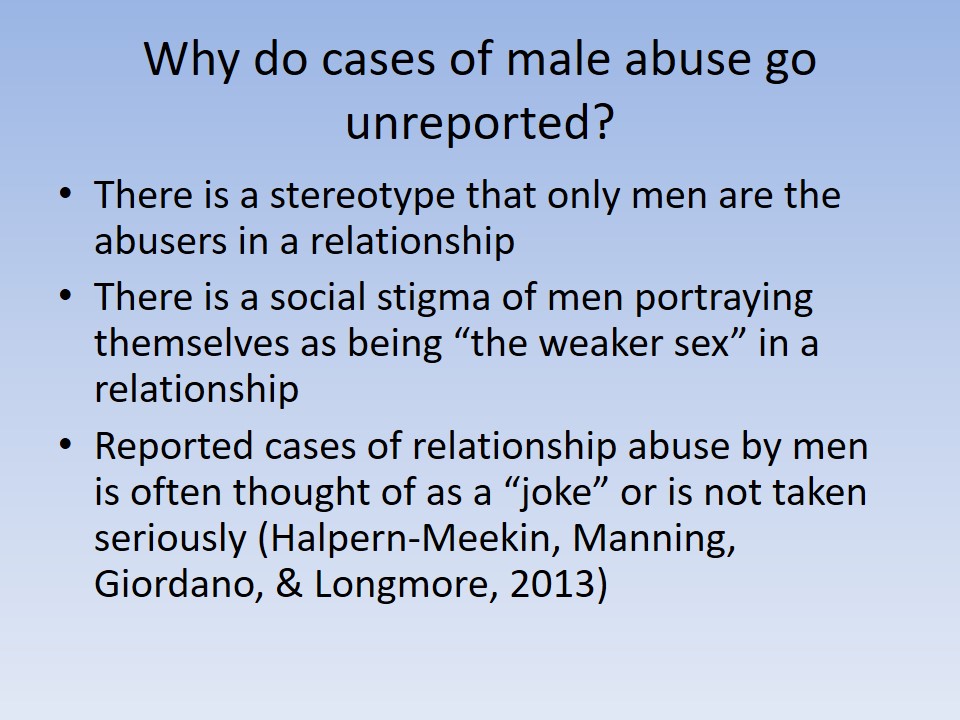
Reference List
Clark, C., Reiland, S., Thorne, C., & Cropsey, K. L. (2014). Relationship of Trauma Exposure and Substance Abuse to Self-Reported Violence Among Men and Women in Substance Abuse Treatment. Journal Of Interpersonal Violence, 29(8), 1514-1530.
Fox, C., Corr, M., Gadd, D., & Butler, I. (2014). Young teenagers’ experiences of domestic abuse. Journal Of Youth Studies, 17(4), 510-526.
Halpern-Meekin, S., Manning, W. D., Giordano, P. C., & Longmore, M. A. (2013). Relationship Churning, Physical Violence, and Verbal Abuse in Young Adult Relationships. Journal Of Marriage & Family, 75(1), 2-12.
McCarthy, R. J., Rabenhorst, M. M., Milner, J. S., Travis, W. J., & Collins, P. S. (2014). What Difference Does a Day Make? Examining Temporal Variations in Partner Maltreatment. Journal Of Family Psychology, 28(3), 421-428.
Salwen, J. K., Hymowitz, G. F., Vivian, D., & O’Leary, K. (2014). Childhood abuse, adult interpersonal abuse, and depression in individuals with extreme obesity. Child Abuse & Neglect, 38(3), 425-433.
Stevens, P. (2014). Recent Trends in Explaining Abuse within Intimate Relationships. Journal Of Criminal Law, 78(2), 184-193.